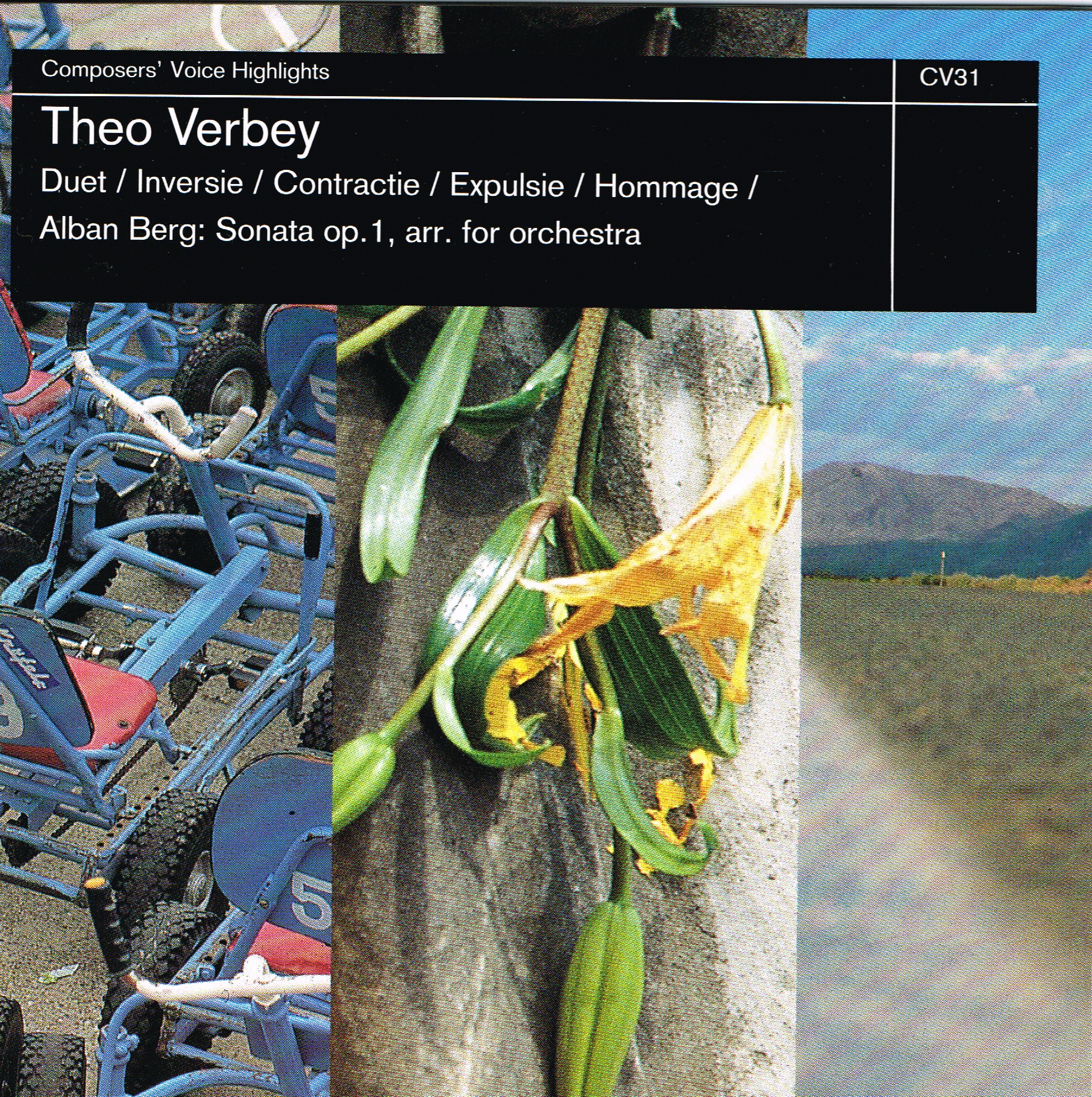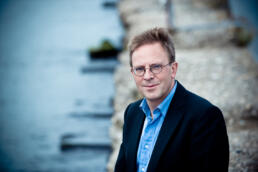Details
Duration:
22'
Instrumentation:
1131 1211 2perc hp pf str(3.2.1.1.)
Written for:
ASKO|Schönburg Ensemble
Commissioned by:
Performing Arts Fund NL
Find on CD:
In Theo's Own Words
“Expulsie is a four-movement composition of approximately 22 minutes for a large instrumental ensemble. The piece forms a triptych, together with Inversie (for 10 instruments, 1987) and Contractie (for alto flute, bass clarinet and piano, 1988). In addition, Expulsie is a direct continuation of my longest piece to date: Aura (1982-1985). The starting point for the composition of this piece is the way the rhythm is structured, a specific kind of rhythm that makes the tempo, or speed audible. I constructed this rhythm based on simple numerical ratios, in this case: 7: 4: 6: 5. Based on that rhythm, the starting point for the piece is the contrast between two chords with a ‘contaminated’ past. The two chords are what’s known as the “Tristan Chord,” and the “Hollywood Chord.” Both chords contain 6 notes and are chromatically complementary i.e., together, the chords make up the 12 tones within the octave. Because the entire piece consists exclusively of these two chords in succession, it gives the piece a very specific character. Each separate movement has its own characteristic instrumentation. In the first movement, the strings predominate and the most recognizable figure is a sustained chord followed by a short, strongly accented chord. The second movement is built around the piano and harp solos; the long-short figure is turned into an appoggiatura with a long note. The third movement is made up of a succession of various solos in the woodwinds, and in the fourth movement, the brass is the most important instrumental group. The 3rd and 4th movements are played with no break in between. The piece has a somewhat curious origin. I composed the 3rd and 4th movements in 1988, after which I created the 1st and 2nd movement in 1990. The world premiere took place on November 24, 1990 in the Concertgebouw Amsterdam during a concert in the Saturday Matinee Series. The piece was subsequently performed by the Norwegian Radio Orchestra in Oslo in 1996, and by the Absolute Ensemble in New York in 1999.”
– Theo Verbey
In Concert
Press Quotes
‘Verbey’s music is unusually intricate and poetic. “Expulsion,” for an ensemble of 24 players, is based, according to the composer, on an oscillation of two chords, but these provide just a haze over continuous contrapuntal interplay. One has the sense of numerous instrumental voices talking to one another, of music talking to itself, just being there. Not demanding attention, almost resisting it, the piece hooks one in. The Absolute’s performance could have been more carefully modulated, but its liveliness was persuasive, and one was left wanting to hear more of this composer.’ Paul Griffiths, New York Times, 20 April 1999
Reviews
20 Apr 1999
Expulsie
Paul Griffiths, from The New York Times
"By far the most substantial piece of the evening was "Expulsion" by the Dutch composer Theo Verbey. Like many other composers from the Netherlands, Mr. Verbey obviously appreciates the pulse and clarity of Stravinsky, in combination with the ruder dynamism of popular music as mediated by, again, American minimalists. But his music is unusually…

